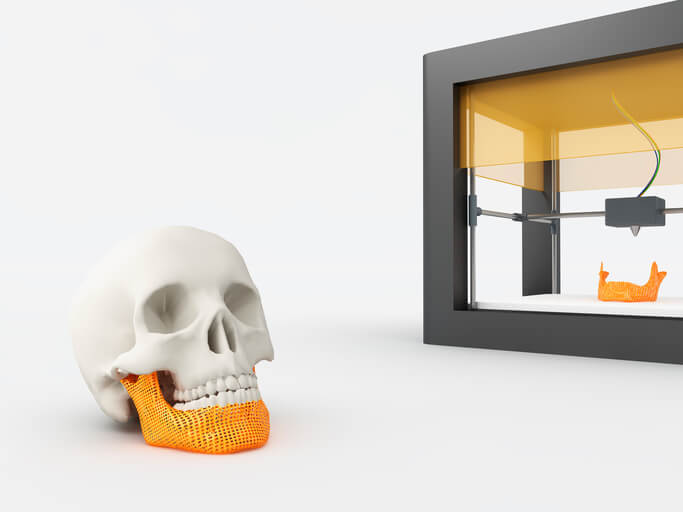What are Bionic implants?
In the 1970s, a US Television show called the Six Million Dollar Man was created. The protagonist, Steve Austin is an astronaut that is involved in a near-fatal space shuttle crash. He was experimented on, replacing all four limbs and his eye with ‘bionic’ implants, making him superhuman. Some 40 years later, what was once considered science fiction is a reality with advancements in bionics happening each year.
The word ‘Bionic’ intersects biology and technology. Something that is artificial is created to behave as if it were real. In terms of the human body, Bionic Implants is the practice of creating and replacing a missing or damaged part of the body with an electronic equivalent. Sometimes, the bionic implant can even outperform its organic counterpart. We should not confuse bionics with a prosthesis. A prosthetic is merely a placeholder, giving the owner limited use. Bionics allows the user to regain functionality and use of the limb or organ like it never left.
Combining studies in electronics, engineering, computer science, and biology, objects like a limb or organ are designed to mimic the look and functionality of parts of the human body.
Recent technologies like 3D Printing, nanotechnology, and Artificial Intelligence improves the durability and realism of Bionic Implants. They are developed to replicate feelings like pressure, sensitivity and electrical impulses associated with touch and sight.
Bionic Implants have been around for decades. It could be argued, the first bionic implant is actually the pacemaker, created in the 1950s. Pacemakers are electrical devices that support the optimal performance of the heart by sending electrical pulses to assist the heart is beating at its expected rate. Another bionic implant arose in the 1980s; the hearing aid. This improved the hard of hearing by attaching a device that amplifies sound. Some other major health applications are:
Bionic Arms and Legs: These are the most known application of bionic implants. Implants are becoming more advanced, allowing the user to experience full control over the bionic. Advanced bionics allow users to run, grip, feel pressure and sensitivity similar to organic arms and legs.
Bionic Hearing: Though hearing aids have improved hearing for decades, bionic implants like the Cochlear Implant System by Advanced Bionics, allows the user to bypass the ear completely and use electrical impulses to the brain to simulate hearing. This method has proven to outperform the traditional hearing aid.
Bionic Eye: Devices to allow improved sight that was otherwise impossible. Though not replacing the physical eye, these are glasses mounted over the wearer’s eyes with built-in cameras, processors and transmitters to receive information and send it to the brain to recreate an image for the patient. Advancements in bionic eye implants may soon see the physical, damaged eye and optic nerve completely changed with an artificial equivalent.
Bionic Heart: The Total Artificial Heart (TAH) allow the user to have an artificial heart surgically installed to replace the performance of damaged valves and ventricles. The company BiVACOR, for example, created a bionic heart implant that is small, durable, and can perform as well as a heart transplant until the physical transplant is ready.
Bionic Organs: Major progress has been made in creating bionic organs, like kidneys. The bionic kidney implant can flush blood of toxins and are even used without an electronic source. Other bionic organs like a bionic pancreas and bionic brain implants are being researched as well.
In a 2017 Market Research report, The Global Medical Bionic Implants Market is expected to exceed more than USD 22 billion by 2022 and will grow more than 7% in the given forecast period. The number of startups and companies in the bionic space grows yearly, with over 60 large bionic companies and 170 startup and research institutes and counting.
Major players developing bionic implants for healthcare
This bionic implant market is a competitive market, with several organisations creating similar bionic products for customers.
- Touch Bionics is a company that specializes in bionic arms and improving the functionality of bionic arm. Their iLimb Quantum technology allows implants to behave and be used as an organic arm and hand.
- IBionics is a Canadian startup creating a visual implant called the Diamond Eye improving facial recognition.
- Ossur, creator of the PROPRIO FOOT is a bionic foot implant that can allow the user to emulate the pressure and movement of an organic limb.
- Advanced Bionics, a leading bionic company, focuses on providing quality bionic implants for hearing. They are responsible for the Cochlear Implant System, which improves hearing by bypassing the damaged eardrum altogether and sending impulses to the brain.
- Open Bionics, a startup using 3D printing to create the ‘Hero Arm.’ It’s an affordable alternative to most bionic arms with similar functionalities as their expensive counterparts.
- The Center of Extreme Bionics at MIT is one of the leading research institutes. Hugh Herr is one of the advocates for bionics and is famous in the bionic space. A double amputee himself, he is heavily involved in research improving the usability, function and performance of bionic leg implants.
- The University of California, San Francisco is pioneering The Kidney Project; A bionic kidney implant to replace the need for transplant.
- The Bionics Institute, an independent research institute focuses on improving the technology and application for bionic hearing, sight and brain implants.
Conclusion
The bionic implant world will improve the way mankind can function without vital parts of the body. Bionics merges biology, mechanics, engineering and computer science to create realistic and functional parts of the body. The major applications are arms, legs and hearing but strides are being made in areas like organs, vision and the brain.
What is more amazing is the ability to infuse expanding technologies like 3D Printing, Artificial Intelligence and nanotechnology to improve the function of bionic implants.
Capturing data from everyday use is also possible and can also be used for bionic improvement. Technology will also allow these implants to feel more realistic, like this water-based synthetic tissue created for artificial eyes.
We can conclude that bionic implants are here to stay. The global market for bionics is extremely competitive and continues to grow at a pace of 7% year over year. The major startups and research institutions all agree that bionic implants can have a positive effect on the world. Even governments are investing heavily in bionics. In 2015, the Australian government pledged 250 million dollars to biomedicine, including bionic implants. We may not become superhuman but bionic implants can make us feel more human that we would have without them.
Image credit: www.istockphoto.com

















